The engine - how power is created
The Video Course teaches you everything about modern cars.
The conversion of fuel energy into power in an engine starts when petrol is mixed with air in a device called a carburettor , to form a highly combustible mixture.
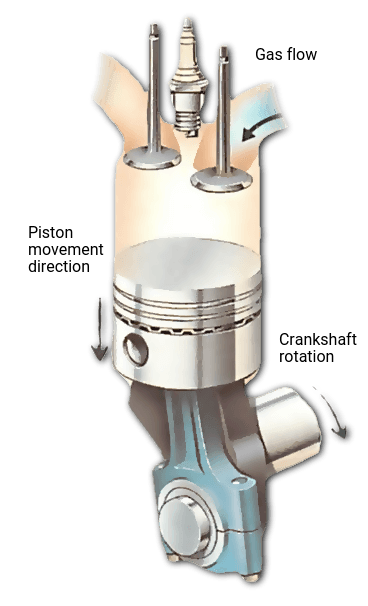
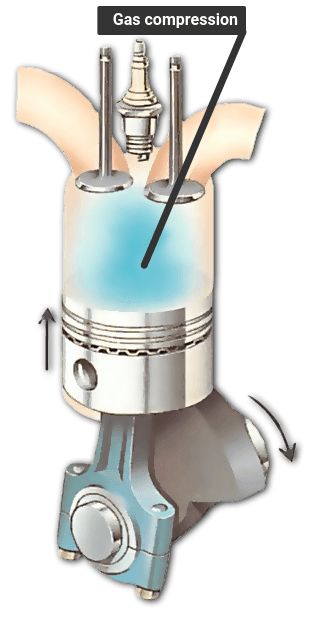
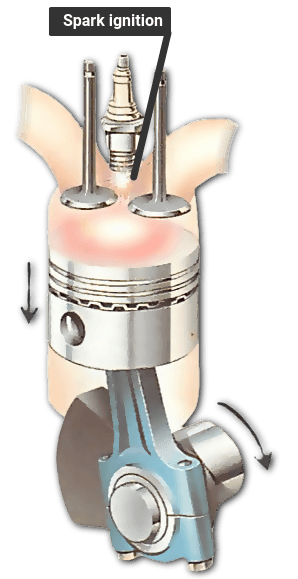
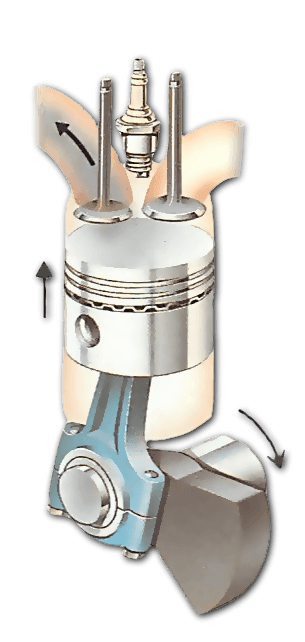
The mixture is drawn into the cylinders through valves , compressed to about an eighth or ninth of its original volume by a piston , and then ignited by a sparkplug.
Rapid expansion of the burning gas , the combustion , drives the piston down the cylinder.
The downward thrust is changed by the connecting rod to rotary movement of the crankshaft in much the same way as a cyclist pressing his foot on the pedal turns the chain wheel.
The downward stroke of the piston is known as the power stroke in a four-stroke cycle it occurs only once in every four strokes of the piston's up-and-down movement.
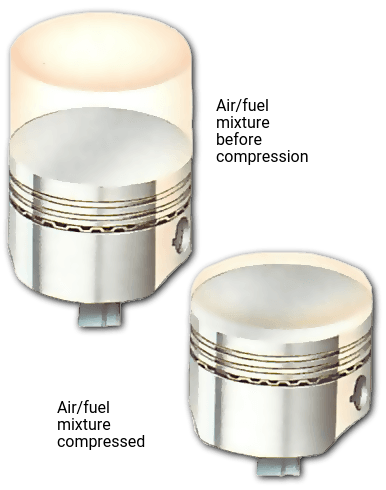
The cycle starts with the induction stroke. With the exhaust valve closed, a downward movement of the piston sucks fuel mixture from the carburettor into the cylinder. The mixture enters through the inlet valve, which has been opened by the camshaft turning.
The upward movement of the piston which follows is the compression stroke . The exhaust valve remains closed and the inlet valve also closes, so the mixture in the cylinder is compressed by the rising piston into a small space known as the combustion chamber usually in the cylinder head or in the top of the piston.
A spark from the sparkplug ignites the mixture and causes it to expand rapidly, driving the piston down in the power stroke.
As the piston rises once more, the inlet valve remains closed but the exhaust valve opens. This movement allows the waste products of the burned mixture to escape through the exhaust system , and is called the exhaust stroke .
The camshaft continues to rotate, the exhaust valve closes and the inlet valve opens and the four-stroke cycle starts again.
The firing order
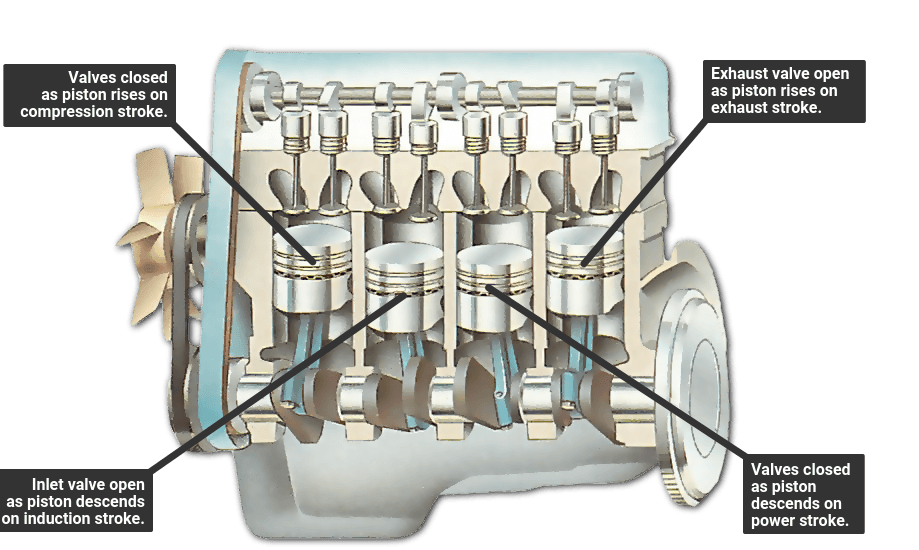
The sequence in which the sparkplugs ignite the mixture in each of the engine cylinders is known as the firing order .
This is controlled by the distributor , which directs the flow of current to each plug at the correct time during the engine's four-stroke cycle. The camshaft is designed to open and shut the valves in the required sequence.
The spark occurs just before the piston reaches top dead centre ( TDC ) on the compression stroke.
The cylinders of an in-line engine are usually numbered from front to rear, starting with No. 1 cylinder.
If the plugs were fired in numerical order from one end to the other, the successive power impulses from the pistons would cause the engine to run very unevenly and vibrate excessively.
In a four-cylinder engine, vibration is reduced with a firing order 1, 3, 4, 2 or 1, 2, 4, 3.
Whenever the high-tension leads are removed from the sparkplugs they must always be reconnected in the correct sequence, to maintain the proper firing order.
If in any doubt, label the leads with their cylinder numbers on pieces of sticky tape.
The inertia of the rotating flywheel also helps to smooth out the cyclic variations and minimises vibration of the engine.
The Ultimate Car Mechanics video course
Learn everything about modern cars from our new video series.
Learn more >-
We build a Mazda MX5 Miata from scratch
We start by tearing down and then rebuilding the whole car.
-
Every part explained
There's ridiculous detail on every part. Clearly and easily explained.
-
All modeled in 3D
We've created the most detailed 3D model ever produced so we can show you everything working.






